|
_____________
Strategic Development
Planning
Urban Design
Architecture
Landscape
Tourism
_____________
|
|
Tourism Plan
The preparation of tourism development plans and detailed design proposals for tourism facilities has been an important part of the firm's activities.
As a result of strategic national and regional studies, Shankland Cox has often been retained to undertake investigative studies to determine the potential for tourism development. These projects often require a marketing analysis where potential development areas have been identified in the context of competing destinations. In many cases marketing and transportation analysis will be closely linked, especially where attractive but remote locations are identified.
Whether developing a new tourist destination, a theme park or conservation of historical site the viability of tourism development not only depends on the existing market or creation of a new one but on a myriad of different factors. The site needs to be analysed with regards to infrastructure, services, socio-economic conditions, construction costs and within sustainable environmental limits before a full feasibility assessment can be run.
The firm has extensive experience in all aspects of tourism development from planning to detailed design of hotels, recreational and entertainment facilities.
|
Caribbean Tourism Supply Study
Client: International Bank for Reconstruction and Development (World Bank) |
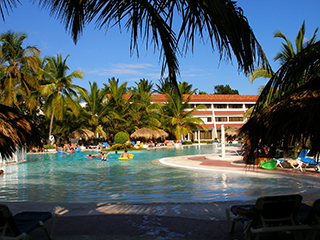
|
|
This study was commissioned by the World Bank and Shankland Cox were appointed to carry out survey studies. The Caribbean Region defined for the purposes of this study included the following islands that were visited during the course of the study: Bermuda, The Bahamas, Turks and Caicos Islands, Puerto Rico, US Virgin Islands, British Virgin Islands, St. Kitts-Nevis, Antigua, Dominica, St. Lucia, Barbados, Grenada, St. Vincent, and the Cayman Islands. Data for Jamaica, The Dominican Republic, Trinidad and Tobago, Martinique, Guadeloupe, The Netherland Antilles and Haiti were obtained through the office of the Shankland Cox in these islands and/or from material available to the World Bank including: existing tourist accommodation, visitors and visitor characteristics, hotel occupancy rates, evaluation of tourism programmes, foreign exchange, employment, incentives, social impact of tourism, transportation and construction industries. As part of the work overall conclusions were formulated about the past, present and future development of the tourism sector in the Caribbean.
The study was intended primarily as a working document for regional organizations, governments, development agencies and tourist associations in the Caribbean. The information contained in the final report provides a useful basis for marketing and pre-investment studies throughout the Caribbean Region. Statistics in respect of employment, incentives and social impact can be used to determine future policies in respect of development in specific locations. Information on past and future development programmes, transportation and the construction industry can be utilized in an effort to arrive at sensible planning proposals at both a broad regional and national level as well as for detailed development.
|
Tourism Development, Dominica
Client: Overseas Development Administration (UK Government) and
Government of Dominica
|
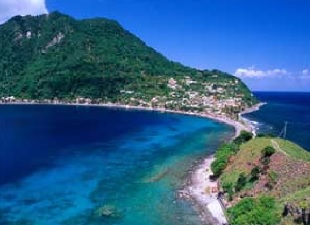
|
|
The study included a market appraisal, planning and design studies and recommendations on the realization of the proposals. Social and economic studies included estimates on employment, the constructing industry, social problems and financing. A financial analysis of the proposals and recommendations on promotional procedures formed part of the work. The development strategy provides for 5,200 tourist beds by 1990 of which 4,300 are for visitors. The remainders were allocated for staff working in hotels, other residents and retired people.
The accommodation comprises 3,380 beds in hotels and guest houses and the balance in 463 apartments or villas. A further allowance of 265 beds for conversion of existing property was made and 220 beds for the development of isolated inland hotels outside the tourism zones. The proposals included the provision of supporting facilities, infrastructure and services including shops, golf courses, restaurants and night clubs. The development programme for the first five years included the expansion of the water supply system building of a hotel training school, road construction, forest trails, development of infrastructure as well as the construction of three medium sized hotels, two small hotels, several apartments and villas in five locations.
|
Cap d'Agde, France
Client: Societe Civil Immobiliere Villages Sud
|
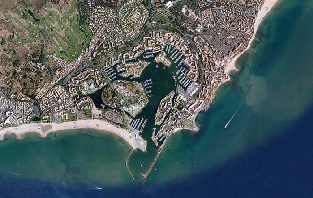
|
|
Cap d'Agde to the west of La Grande Motte is a particularly
attractive site for one of the new towns
of the Lanquedoc Roussilon coast.
Shankland Cox was commissioned
to design a housing scheme on an
important site adjacent to the sea and to
a small marina. The scheme consists of
about 80 houses of one to three storeys,
each with its own garden and car parking
space, grouped around landscaped
courts and served by culs-de-sac.
|
Long Island Tourism Development, Antigua
Client: Private
|
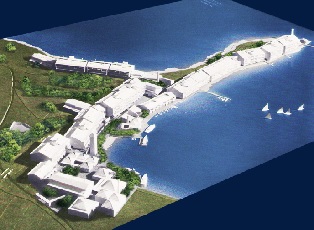
|
|
Shankland Cox prepared a preliminary
plan and design for the development
of the whole of a small island. The
proposal takes advantage of the special
character and setting of the island and
aim to enhance its natural quality and
attractions.
The development consist of three luxury
hotels with a total of 1200 rooms, 830
condominium apartments, a village
which will be the social, shopping and
entertainment centre of the island, a
yacht harbour, and a wide range of
recreational facilities including an 18
hole golf course, parks and botanical
gardens. Accommodation is located
around the coast of the island close to
the beaches, with the buildings sited
and landscaped to emphasise the
topography. The interior was planned
to be developed mainly for recreational
uses.
|
North West Region Tourism Study, Argentina
Client: General Secretariat. Organisation of American States.
|
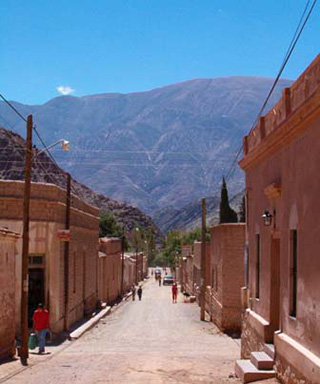
|
|
Shankland Cox was asked to advise
on how the character of the traditional
villages could be retained in the face
of modern development and the influx
of tourism.
The studies form part the NAO Tourism
Development Programme undertaken by
the government. Plans were prepared for
a number of villages in the three provinces
taking into consideration the future
pattern of development, development
control mechanism, method for the
conservation of the village character
and building preservation as well as the
relationship between the settlements
and the surrounding landscape. Plans
were also prepared for the village
centres and recommendations made
in respect of conservation of existing
buildings, open space and landscape
features, traffic movement and urban
design considerations.
|
Tourism Development, Anguilla
Client: Government of Anguilla
|
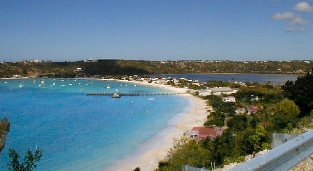
|
|
Shankland Cox was retained to advise
the government of Anguilla on the
suitability of current tourism development
proposals by the private sector for
the Cove and Maunday's Bay area to
the south west of the island. The site
comprises a long narrow sand spit
between the sea to the south and salt
ponds to the north. It is ideal for high
quality tourism development comprising
long unobstructed bays of clean white
sand backed by tall coconut palms and
dunes. Views from the site extend across
to St. Martins and other small island.
The developers' proposals were
considered and a plan prepared taking
into account land ownership, engineering
feasibility and phasing. The plan
identified sites for hotels, a marina and
tourism village, villa development and
water based recreational activities. The
plan included proposals for infrastructure
and roads and the dredging of the ponds
and providing a link from them to the sea.
|
Tourism Development Oman
Client: Ministry of Commerce and Industry
|
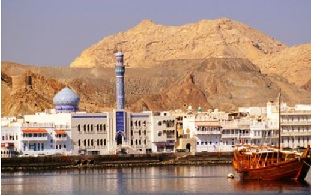
|
|
Shankland was commissioned to
prepare a long term tourism Master Plan
for Oman covering a key development
strategy, identification of key markets,
a development programme and
preparation of local plans and conceptual
design for priority projects. The socioeconomic
implications of tourism growth
were also evaluated in the form of
income projections, employment and
government revenue.
|
Tourism Master Plan for the Andamans
Client: UNDP/ World Tourism Organisation
|
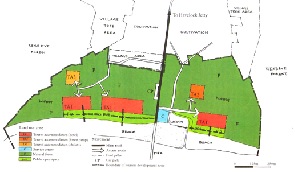
|
|
Shankland Cox was commissioned to prepare a comprehensive, long term tourism master plan and mid term development programme for the Andaman's, covering policy, key markets and development stages. Visitors projected arrivals was forecasted to be around 120,000 by 2005, with 60%/40% split between domestic /international tourist arrivals.
Central to the development of the recommended strategy was the need to mitigate any advese impact on the environment, avoid excessive concentrations of visitors or development in any one place and ensure the tourism product presented is environmentally sustainable. It included recommendations on the need for training programmes (hotel and catering), effective instruments for policy development, marketing, planning and implementation of the tourism, identification of priority tourism areas and preparation of local and project development plan.
The total tourist accommodation in the strategy was distributed among five different groups of islands including the capital area with a total provision of around 4000 tourist beds accommodation by 2005
|
National Tourism Plan for Mongolia
Client: World Tourism Organisation United Nation Development Programme
|
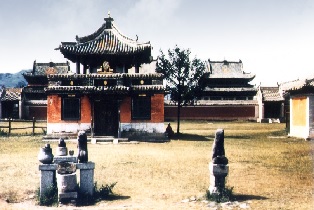
|
|
The World Tourism Organisation (WTO) acting as executing agents for the United Nation Development Programme (UNDP) commissioned Shankland Cox to undertake a Tourism Planning and Training Project for the Mongolian People's Republic under the direction of the Mongolian National Tourism Organisation (Zhuulchin). The National Tourism Plan prepared consisted of four components: A Development Strategy, Policies for implementing the strategy, a development programme and preparation of local plans and conceptual design for three priority projects. The socio-economic implications of tourism growth were also evaluated in the form of income projections, employment and government revenue from income projections, employment and government revenue.
|
Tourism Planning and Training in Tibet, China
Client: United Nation Development Programme, World Tourism Organisation, China
National Tourism Administration, Government of Tibet Autonomous Region
|

|
|
The World Tourism Organisation (WTO) commissioned Shankland Cox to carry out a long term, comprehensive tourism master plan, a related development programme and to propose improvements to the planning capability of the Tibetan Tourism Bureau through counterpart training and workshops on tourism planning techniques. Development concepts, realizing the tourist potential of the cultural, historic and environmental resources of the region were proposed. These included the setting up of the cultural tourism zones, trekking areas, environmental zones and the development of other tourist activities.
Throughout the plan, the effective use of capital resources was given paramount importance to make all proposals feasible. Manpower development and training as well as the formulation of a development programme (including prioritisation of projects) were also carried out. Priority Projects, including the formulation of a Tourism Improvement Plan for Lhasa involving conservation policies, planning controls and improvement projects, were also prepared. The programme of tourism accommodation proposed an addition of 800 rooms to be provided by year 2000.
The Tourism Plan include the increase in tourism facilities namely basic sanitary facilities on main tourism routes and mountaineering base camps and trekking trails, reception centres at historic monuments, adventure tourist service centres, cultural and tourist centre at Lhasa; infrastructure improvement such as international and inter-provincial air services and regional services, road improvements and reduction on the impact on the natural environment, especially on natural protection areas.
|
|











